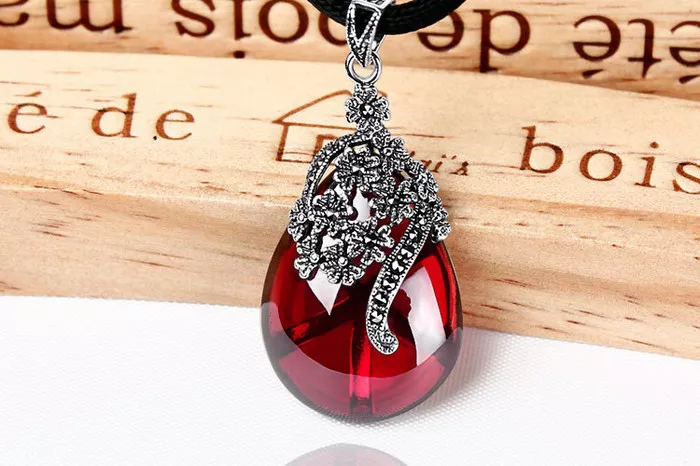Rubies, with their captivating red hue and timeless allure, have long been revered as one of the most prized gemstones in the world. Renowned for their rarity, durability, and beauty, rubies hold a special place in the hearts of gemstone enthusiasts and collectors alike. However, determining the value of rubies can be a complex process, influenced by various factors ranging from color and clarity to size and origin. In this article, we delve into the intricacies of ruby valuation, exploring the key factors that affect their worth per carat and offering insights into purchasing these exquisite gems.
Understanding Ruby
Before delving into the valuation of rubies, it’s essential to understand what makes these gemstones so unique. Rubies are a variety of the mineral corundum, with their distinct red coloration attributed to the presence of chromium within the crystal structure. While corundum in other colors, such as blue and yellow, is known as sapphire, the vivid red hue of rubies sets them apart as a coveted gemstone.
The finest rubies exhibit a rich, vibrant red color, often described as “pigeon’s blood” red, with a combination of hue, tone, and saturation that captivates the eye. Beyond their color, rubies are valued for their clarity, with fewer inclusions indicating a higher quality stone. Additionally, the size and cut of a ruby can impact its overall appeal and value, with larger, well-proportioned gems commanding premium prices.
Factors Affecting Ruby Value
Several factors play a pivotal role in determining the value of rubies, with each aspect contributing to their desirability and rarity:
Color: The color of a ruby is perhaps the most significant determinant of its value. Stones with a vibrant, pure red hue command the highest prices, especially those with a slight blue undertone. Rubies with undesirable hues, such as brown or orange, are generally less valuable.
Clarity: The clarity of a ruby refers to the presence of inclusions or blemishes within the stone. While some inclusions are expected in natural rubies, those with minimal flaws are considered more valuable. Stones that are free from visible inclusions under magnification are exceptionally rare and highly sought after.
Cut: The cut of a ruby influences its brilliance, sparkle, and overall visual appeal. A well-proportioned cut can enhance the beauty of the stone, maximizing its inherent qualities. Common ruby cuts include oval, cushion, and round, with each shape reflecting light in unique ways.
Carat Weight: Like other gemstones, the size of a ruby is measured in carats, with larger stones typically commanding higher prices per carat. However, the value of a ruby is not solely determined by its size, as other factors such as color and clarity also play crucial roles.
Origin: The geographic origin of a ruby can significantly impact its value, with certain locations renowned for producing exceptional quality stones. Rubies from Myanmar (formerly Burma) are highly prized for their intense color and transparency, while those from Mozambique and Madagascar are valued for their vivid red hues.
Treatment: Many rubies undergo treatment processes to enhance their color and clarity, including heat treatment and fracture filling. While these treatments are common in the industry, untreated rubies are considered more valuable, especially if they exhibit exceptional natural qualities.
What Are Rubies Worth Per Carat
The value of rubies can vary widely depending on their quality, with prices ranging from a few hundred dollars per carat to tens of thousands for exceptional specimens. As of [current year], the average price for a high-quality ruby is approximately [insert average price] per carat, with exceptional stones commanding significantly higher prices.
To provide a general overview, here is a breakdown of ruby prices based on quality:
Commercial Grade: Rubies in this category typically exhibit noticeable inclusions and may display less desirable hues. Prices for commercial-grade rubies range from [insert price range] per carat.
Fine Quality: Rubies of fine quality boast good color saturation and clarity, making them suitable for use in jewelry. Prices for fine-quality rubies range from [insert price range] per carat.
Exceptional Quality: Rubies that exhibit exceptional color, clarity, and size fall into this category, commanding premium prices in the market. Prices for exceptional-quality rubies can range from [insert price range] per carat and higher.
It’s important to note that these price ranges are indicative and may vary depending on market conditions, supply, and demand dynamics, as well as individual gemstone characteristics.
Buying Tips
When purchasing rubies, it’s essential to educate yourself about the key factors that influence their value and quality. Here are some tips to keep in mind:
Educate Yourself: Learn about the four Cs of ruby valuation—color, clarity, cut, and carat weight—and familiarize yourself with the various characteristics that contribute to a ruby’s worth.
Seek Certification: Purchase rubies that have been certified by reputable gemological laboratories, such as the Gemological Institute of America (GIA) or the American Gemological Laboratories (AGL). Certification ensures that the gemstone has been rigorously evaluated and graded according to industry standards.
Consider Origin: Pay attention to the origin of the ruby, as stones from certain regions may command higher prices due to their exceptional quality and rarity.
Inspect the Stone: Examine the ruby under magnification to assess its color, clarity, and any visible inclusions. Avoid stones with significant flaws or undesirable color characteristics.
Conclusion
In conclusion, the value of rubies per carat is determined by a combination of factors, including color, clarity, cut, carat weight, origin, and treatment. By understanding these factors and following the buying tips outlined in this article, you can make informed decisions when purchasing rubies and acquire exquisite gemstones that are both beautiful and valuable additions to your collection.


